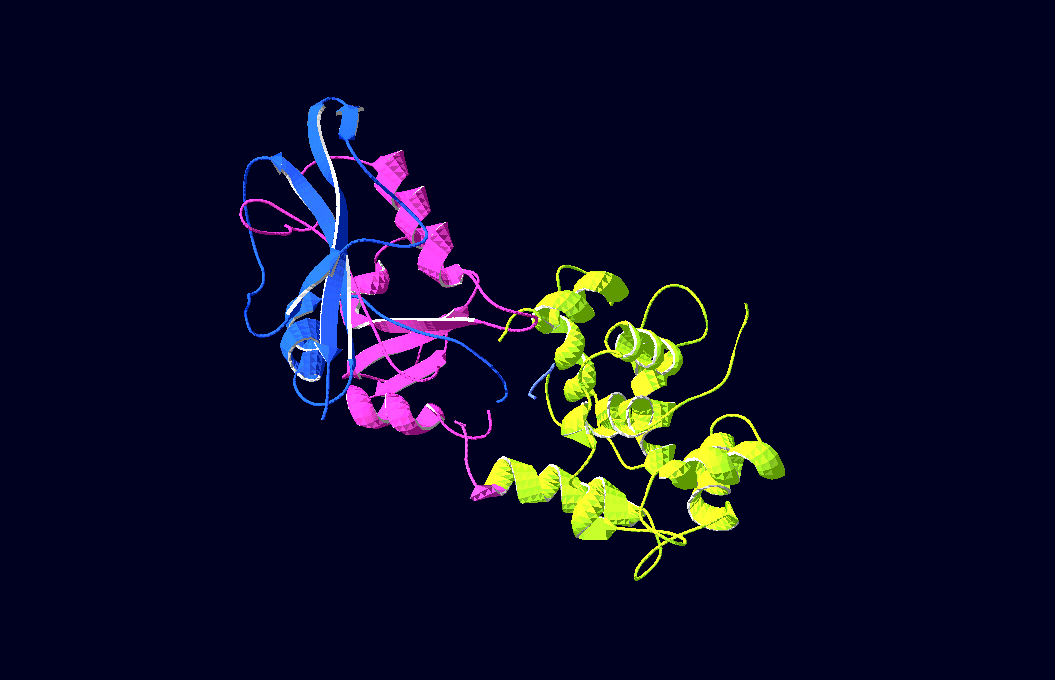Freiburg07/report Ca sensor
From 2007.igem.org
m |
|||
| Line 8: | Line 8: | ||
this circumstance allows enzyme-activity-assays.<br> | this circumstance allows enzyme-activity-assays.<br> | ||
As those assays were already being used in our lab before, we could access plasmids containing enzyme-halfs of beta-lactamase and Dihydrofolatereductase (DHFR).<br> | As those assays were already being used in our lab before, we could access plasmids containing enzyme-halfs of beta-lactamase and Dihydrofolatereductase (DHFR).<br> | ||
| + | |||
| + | |||
| + | Calmoduline:<br> | ||
| + | This molecule is known for its strong conformational change upon binding calcine.<br> Ikura, Truong et al.(Ontario Cancer Institute and Department of medical Biophysics, University of Toronto) have fused CFP and YFP to the ends of modified calmodulin and shown that you can then induce FRET between them by adding calcine.<br> This work inspired us to test calmoduline as "switch" for our split enzymes. Prof. Ikura was so friendly to send us his calmoduline (as plasmid with sequence, thanks a lot again!) so that we could gain it via PCR. | ||
| + | |||
The idea:<br> | The idea:<br> | ||
| - | Was to attach those enzyme-halfs to several trigger-proteins (here: calmoduline | + | Was to attach those enzyme-halfs to several trigger-proteins (here: calmoduline) |
by cloning each one of the enzyme-halfs and the trigger-protein together in one plasmid.<br> | by cloning each one of the enzyme-halfs and the trigger-protein together in one plasmid.<br> | ||
This plasmid would then contain the code for the whole "protein-machinery", allowing in vivo-tests as well as expression and purification of the engineered protein, an on/off-switchable enzyme.<br> | This plasmid would then contain the code for the whole "protein-machinery", allowing in vivo-tests as well as expression and purification of the engineered protein, an on/off-switchable enzyme.<br> | ||
| + | |||
<div style="float:right"> | <div style="float:right"> | ||
Revision as of 14:10, 23 October 2007
Contents |
A single-protein calcium ion sensor mediating cell survival
iGEM team Freiburg
Introduction
Split enzymes:
Some enzymes can be divided into two separate parts that won´t show any activity until both parts are physically brought together again;
this circumstance allows enzyme-activity-assays.
As those assays were already being used in our lab before, we could access plasmids containing enzyme-halfs of beta-lactamase and Dihydrofolatereductase (DHFR).
Calmoduline:
This molecule is known for its strong conformational change upon binding calcine.
Ikura, Truong et al.(Ontario Cancer Institute and Department of medical Biophysics, University of Toronto) have fused CFP and YFP to the ends of modified calmodulin and shown that you can then induce FRET between them by adding calcine.
This work inspired us to test calmoduline as "switch" for our split enzymes. Prof. Ikura was so friendly to send us his calmoduline (as plasmid with sequence, thanks a lot again!) so that we could gain it via PCR.
The idea:
Was to attach those enzyme-halfs to several trigger-proteins (here: calmoduline)
by cloning each one of the enzyme-halfs and the trigger-protein together in one plasmid.
This plasmid would then contain the code for the whole "protein-machinery", allowing in vivo-tests as well as expression and purification of the engineered protein, an on/off-switchable enzyme.
Materials and Methods
Results
Plasmids:
We gained plasmids containing both parts of DHFR linked to calmoduline by 2/4/6 glycins;
in-vivo-growth tests showed the best activity for 4-glycine linkers;
thus we decided to proceed
with this linker-length.
In-Vivo-Analysis:
As DHFR is essential for bacterial growth in minimal media with trimethioprim (TMP),
we could show that the ability of E.colis with our plasmid to grow is directly dependant on the presence -and, furthermore, concentration- of calcine-ions (Ca2+)in the media:

